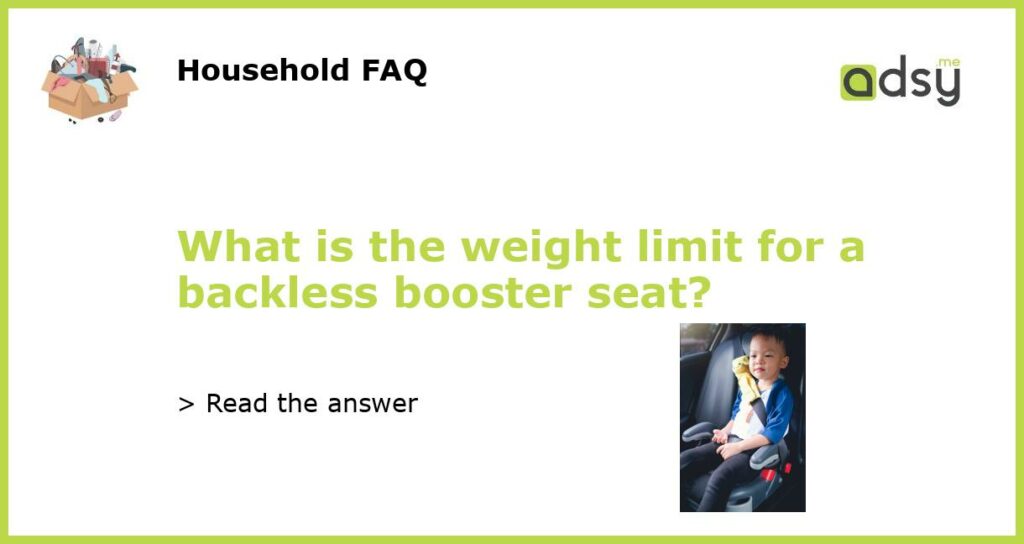Understanding the Basics of Booster Seats
Parents understand how important it is to keep their kids safe in the car. One of the most important ways to ensure this is by using a booster seat. Designed to lift the child’s seating position, the booster seat ensures that the seat belt rests properly across their chest and hips – ensuring that they are not injured during an impact caused by an accident. However, most parents worry about the weight limit of backless booster seat.
The Legal Weight Limit for a Backless Booster Seat
The truth is that there is no federally mandated weight limit that defines when a child can stop using a backless booster seat. Instead, the laws on this issue vary from state to state, so you’ll need to check the laws in your area to determine the weight limit for backless booster seat.
Alternative Recommendations for Booster Seats
It is usually recommended that children use a booster seat until they’re at least 4 feet 9 inches tall or weigh between 80 and 100 pounds. Beyond that, most pediatricians recommend that children stick to a booster seat until they’re using a regular seat belt, regardless of the booster seat weight limit in your state.
The Risks of Skipping a Booster Seat
Although it’s tempting to skip the booster seat once your child reaches a certain weight, the truth is that it’s simply not worth the risk. Without a booster seat, children can be injured during an accident in a number of different ways. The most common is when the seat belt rests across their stomach or neck, which can be dangerous – if not deadly.
At the end of the day, it’s always best to err on the side of caution when it comes to your kid’s safety. Even if your kid is right at the weight limit for backless booster seat, you should continue to use this device as long as you can, ensuring that your child is safe while on the road.






